| Srl | Item |
| 1 |
ID:
066183
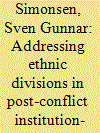

|
|
|
| 2 |
ID:
087810
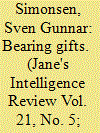

|
|
|
| 3 |
ID:
099219
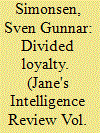

|
|
|
| 4 |
ID:
092932
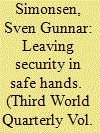

|
|
|
|
|
| Publication |
2009.
|
| Summary/Abstract |
Built by outside powers and targeted against local insurgents, the new national armies of Afghanistan and Iraq are fragile institutions. The legitimacy of these forces is limited in the deeply divided societies in which they exist. Whereas low levels of legitimacy exert a disintegrative pressure upon an army, cohesion counterweighs such pressure. This article engages the theory of military unit cohesion for the purpose of increasing understanding of the challenges to cohesion faced by the new armies of Afghanistan and Iraq. Two main sources of legitimacy for the new armies are discussed: the (ethnic/sectarian) composition of the forces, and their respective missions. Challenges to cohesion are found to depend on how soldiers are recruited and units composed: ethnically/sectarian mixed units may disintegrate because of weak horizontal cohesion; homogeneous units (particularly when recruited as groups and not individually) may splinter off because of weak vertical cohesion. The article also argues that promoting an image of the army as 'national' within a society may reduce disintegrative pressures.
|
|
|
|
|
|
|
|
|
|
|
|
|
|
|
|
| 5 |
ID:
052439
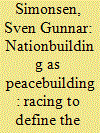

|
|
|
| 6 |
ID:
092134
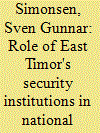

|
|
|
|
|
| Publication |
2009.
|
| Summary/Abstract |
This article examines the interplay between security sector developments and national unity in East Timor since the Indonesian occupation ended in 1999. Particular attention is paid to the regional distinction between Loromonu and Lorosae - people from the west and east of East Timor, respectively. In 2006, East Timor experienced a crisis that saw the disintegration of the military and police forces, and widespread violence that led to massive internal displacement. It was during this crisis that the Loromonu-Lorosae distinction first emerged as a major societal cleavage. The article argues that the independence cause and the guerrilla force Falintil had been an important focus of East Timorese national unity in 1999. In the years that followed, however, the implementation of flawed security policies led to new military and police forces that were politicized, factionalized and lacking in cohesion. Prior to the 2006 crisis, the Loromonu-Lorosae distinction was primarily an issue within the army. As the crisis escalated, however, the violence was to a large extent framed by the east-west dimension, and popular perceptions of the military as 'eastern' and the police as 'western' hardened. A year after the crisis, little if any progress had been made towards reducing the increased salience of the Loromonu-Lorosae distinction in society. The main internal security challenges - gang activity, the unresolved issue of the so-called 'petitioners', and the destabilizing role played by fugitive former head of military police Alfredo Reinado - all had an east-west dimension. The article also finds that new initiatives aimed at reforming East Timor's military and police forces appeared to be lacking in both depth and relevance for addressing the country's new level of internal division, and its immediate, internal security challenges.
|
|
|
|
|
|
|
|
|
|
|
|
|
|
|
|
| 7 |
ID:
093221
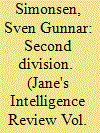

|
|
|